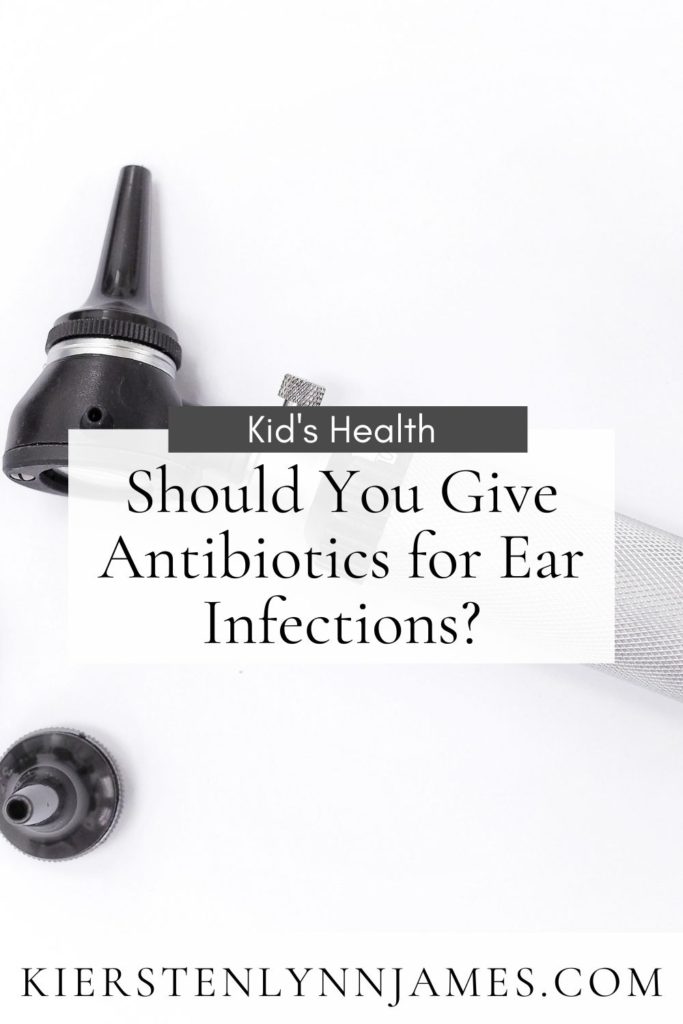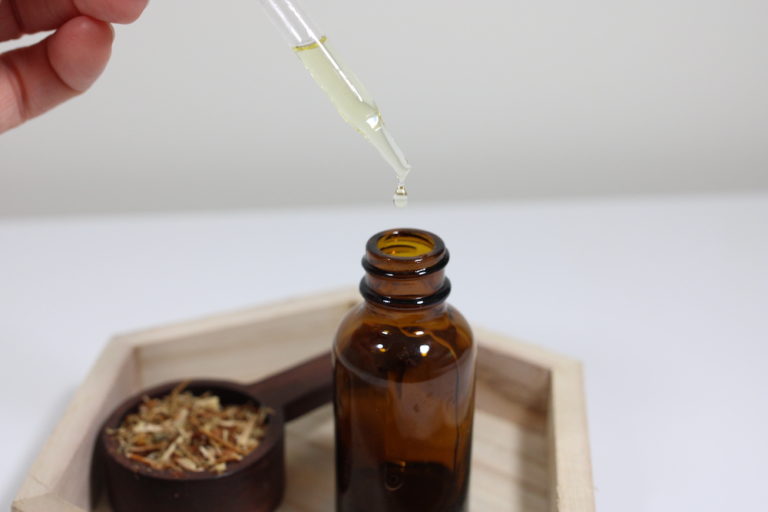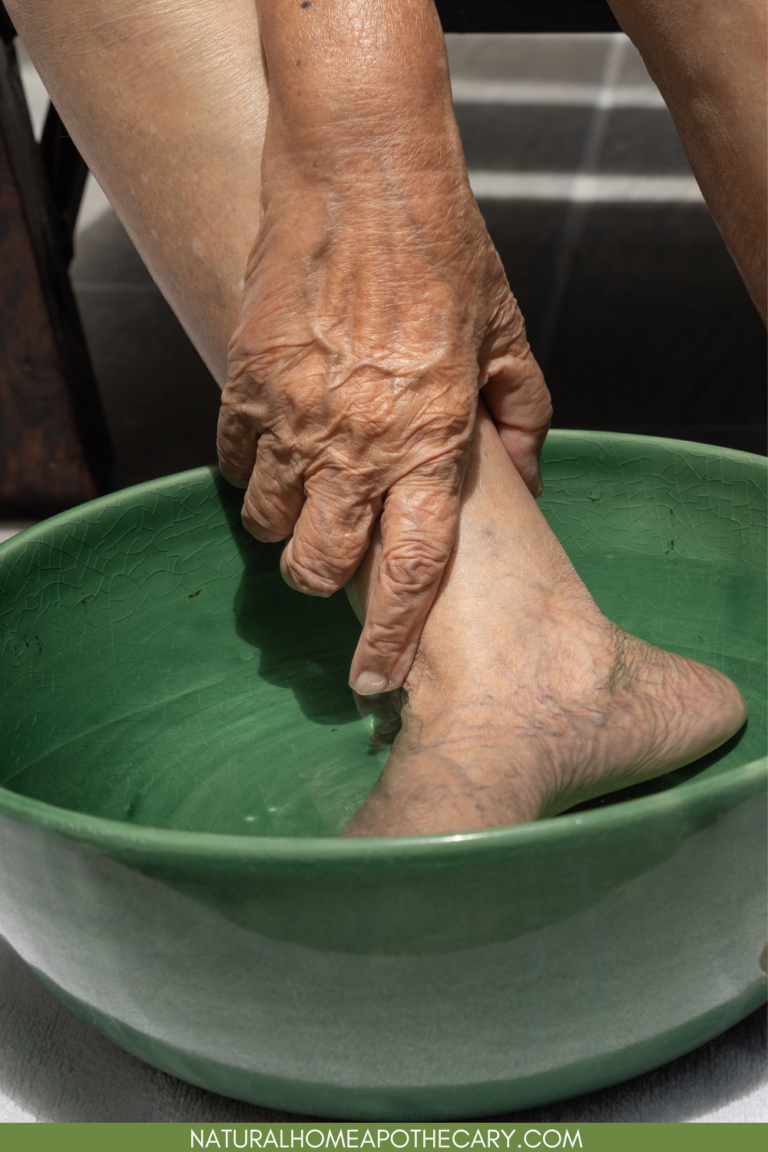Today, we’re taking a look at a popular question from parents – “When should I give my child antibiotics for an ear infection?”. Let’s talk about it.

Ear infections and children are basically one and the same.
If you have a child under the age of 5, chances are they have had at least one ear infection.
Generally speaking, your options are:
- Give antibiotics
- Wait and see what happens
What happens when a child has an ear infection?
In healthcare, the technical term for an ear infection is acute otitis media.
Acute otitis media means that we see notable redness in the middle ear. This leads us to believe some fluid may have become trapped and there could be some kind of infectious or inflammatory process going on.
Ear infections are more common in children than adults because their eustachian tubes are much shorter and lie horizontally. This changes as we get older.
What are some signs my child may have an ear infection?
Depending on the child’s age, ear infections can show themselves through a variety of ways.
Kids generally respond to an ear infection similarly each time so you will be able to learn what different behaviors mean.
Here are the most common signs:
- Ear pulling
- Crying
- Fussiness
- Fever for 1-2 days
- Trouble sleeping
- Reduced appetite
- Vomiting
Do babies and children need antibiotics for an ear infection?
Did you know that ear infections in children are only caused by a bacterial infection part of the time? Most cases are viral.
RSV and influenza are just two viruses known to cause ear infections.
Antibiotics only work on bacterial infections. If most ear aches are viral, antibiotics won’t work.
What should I know about giving antibiotics for an ear infection?
- Antibiotics do not help with ear pain in the first 24-48 hours.
- Antibiotics will only work if there is a bacterial infection.
- Antibiotics may have immediate or delayed side effects such as diarrhea, nausea/vomiting, or allergic reactions.
- Antibiotics have systemic effects that will effect the entire body for months after therapy is completed.
- Ear infections usually clear up on their own in 3-5 days without treatment.
Children 6 months and older will rarely need antibiotics for an ear infection.
There are always exceptions to the rule. Here’s when you might want to consider it:
- Baby younger than 6 months.
- Children 2 years and older who have a 102.2 F fever for more than 48 hours.
- Presence of Down syndrome.
- Presence of a cleft palate.
- Presence of cochlear implants.
- Is very ill and shows symptoms of generalized infection.
Mom Nurse Tip: Learn how to use an otoscope

I’m not a doctor so I cannot legally diagnose. I can tell you what’s wrong with most situations and people but legally, I cannot. :o)
I have a set of eyes, a brain to think, and can look at something and know if it’s normal or not.
Lets even completely ignore the fact that I’m a seasoned RN for a second.
I’m a mother first.
Mothers know when something is up with their kid.
I have an otoscope as part of my home health kit. It helps me to decide whether or not I should make an appointment with our pediatrician for problems concerning the teeth, ears, nose, and throat.
Learn how to use an otoscope to save yourself time and energy running to the doctor each time. It’s very easy.
Most Ear Infections Are Self Limiting
Most ear infections clear up on their own without any intervention or treatment.
The best approach is to alleviate discomfort with home remedies or Tylenol. If the child is still uncomfortable 4 days later, call the doctor.
Regardless of whether or not you choose to give antibiotics, time is generally the best remedy for ear infections.
Pin It For Later!

The statements made on kierstenlynnjames.com have not been evaluated by the U.S. Food and Drug Administration. They are not intended to diagnose, treat, cure, or prevent any condition or disease. Please consult with your personal physician or healthcare specialist regarding any potential changes to your lifestyle or healthcare regimen.
Sources:
https://www.hopkinsmedicine.org/health/conditions-and-diseases/ear-infections-in-babies-and-toddlers
https://www.cdc.gov/antibiotic-use/ear-infection.html
https://myhealth.alberta.ca/Health/aftercareinformation/pages/conditions.aspx?hwid=abp5067
https://myhealth.alberta.ca/Health/Pages/conditions.aspx?hwid=te6203







Great post. Always curious about my boy and the ear infections. One has them way more then the other! We purchased the Pulse ox amateur while the kids had croup last season! Great to see another friendly tool to use at home.
Yes! Walmart has even been selling their own versions (although junkier). It has saved me soo many trips to the doctor.